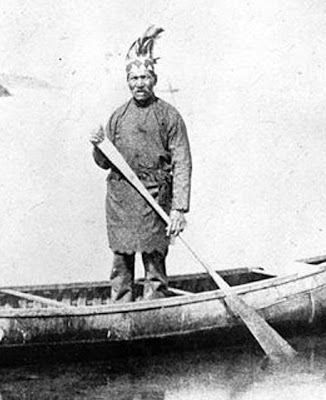beaver
Birchbark CanoeingBuilder
Tomah Joseph was born in New Brunswick in 1837 and died seventy-seven years later. Through his art, Tomah Joseph maintained strong connections to Passamaquoddy culture. His work included basket making, building canoes, manufacturing snowshoes, paddles and related objects and guiding sport fisherman and hunters.
He was well known to the famous Campobello family, the Roosevelts. He built a canoe for Franklin D. Roosevelt that is now in the International Park Reception Center on Campobello Island.
Passamaquoddy life is the dominant theme of Tomah's art. Most frequently, Tomah Joseph depicted the time when the "People" still had a culture based on hunting & fishing.
Tomah Joseph's art and life provide a model of cultural survival in which tourist art is a part of native culture, demonstrating continuity rather than disruption of tradition.
He was well known to the famous Campobello family, the Roosevelts. He built a canoe for Franklin D. Roosevelt that is now in the International Park Reception Center on Campobello Island.
Passamaquoddy life is the dominant theme of Tomah's art. Most frequently, Tomah Joseph depicted the time when the "People" still had a culture based on hunting & fishing.
Tomah Joseph's art and life provide a model of cultural survival in which tourist art is a part of native culture, demonstrating continuity rather than disruption of tradition.











